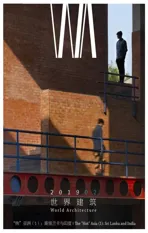引言
2019-02-26希兰特韦兰达维HiranteWelandawe
希兰特·韦兰达维/Hirante Welandawe
叶扬 译/Translated by YE Yang
作者单位:HW建筑事务所/H W Architects
斯里兰卡和印度在各种方面有着千丝万缕的联系,这不仅与它们之间特殊的距离有关,还由于周期性的城市移民,两国有着超过2500年的文化、宗教和语言的联系。也许这些联系中最主要的是两个国家长期处于殖民统治之下,每个国家都曾被葡萄牙人、荷兰人和英国人占领,并最终在两年间先后实现独立。
目前,由于全球资本主义在南亚的蔓延,斯里兰卡和印度都处于紧锣密鼓的城市发展时期。印度在未来20年的投资为800亿美元,预计斯里兰卡在未来20年将吸引150亿美元的投资,用于总额14亿美元中国资助的港口城市项目。尽管乍一看,预算数字相当可观,但实际的发展可能会相当迟缓并不尽人意。斯里兰卡和印度城市发展的很大一部分是由私营开发商主持进行的,对他们来说,数量和面积的最大化是决定性因素;大多数场地过度建设,自然形式和建筑形式之间的平衡发生了惊人的变化,严重影响了城市的宜居性。建筑师在本期中的工作非常雄辩地表明,建筑和城市发展可以在有创意和有意义的设计师手中有不同的想象。我们今天面临的挑战是,这类作品仍然很有限,发生在我们城市的更大规模的开发与创造性和有意义的建筑之间的差距正在扩大。我们如何选择缩短这一差距,将决定我们城市的未来。□
Sri Lanka and India's are linked in a myriad of ways, not just related to their special proximity;due to periodic urban migration the two countries share a legacy of cultural, religious and linguistic connection spanning more than 2500 years. Perhaps chief among those connections is both nations being under Colonial rule for long periods of time,each having been occupied by the Portuguese, Dutch and British and even achieving independence in the space of two consecutive years.
Presently both Sri Lanka and India are going through intense periods of urban development due to the spread of global capitalism in South Asia.India has an investment of $80 billion in the next two decades and Sri Lanka is expected to attract $15 billion in investment over the next 20 years in the $1.4 billion Chinese funded Port City Project. Although the projected numbers may look lucrative on first glance, the development happening on the ground can present a rather more dismal picture. A large component of the development in both Sri Lankan and Indian cities are spearheaded by private sector developers, to whom quantity and maximum footprint are the defining factors; most sites are overbuilt to such an extent that there is an alarming shifting of the balance between the natural and the built forms,severely affecting the livability of the cities. The works of the architects presented in this issue show very eloquently that architecture and urban development could be imagined differently in the hands of creative and meaningful designers. The challenge we face today is that such works still remain few and far between and the gap between the larger body of development work happening in our cities and creative and meaningful architecture is ever widening. How we choose to bridge this gap will define the future of our cities.□

1 工作室住宅,拉夏吉里雅,斯里兰卡/Studio Dwelling, Rajagiriya, Sri Lanka(摄影/Photo: Mahesh Mendis)
